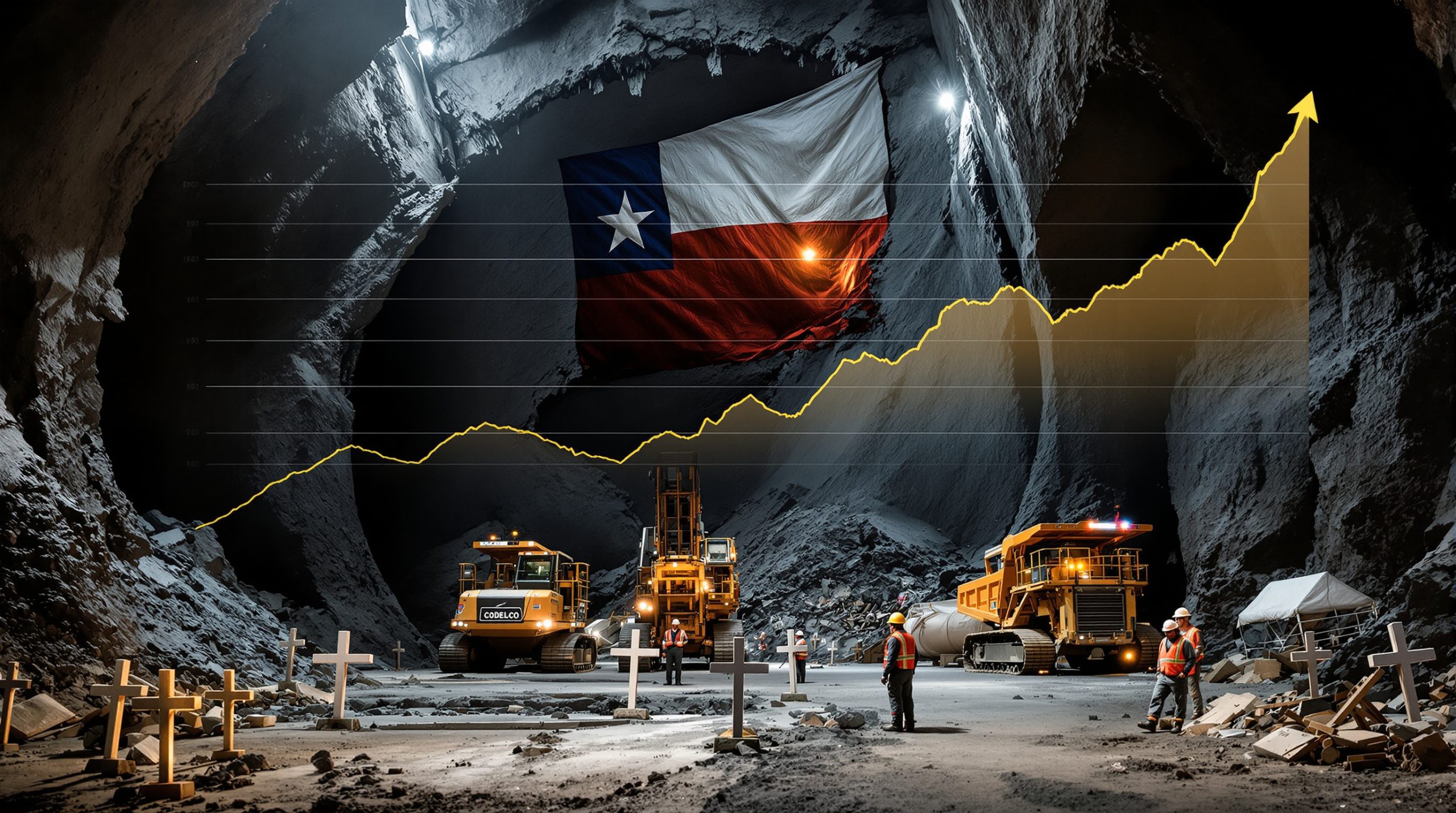Is China Hiding Its Rare Earth Production Plans? Geopolitical Tensions Fuel Speculation
China has broken with years of established practice by not publicly announcing its rare earth mining and refining quotas for 2025. This unusual silence has created ripples of uncertainty across global markets that depend on these critical minerals energy security for everything from smartphones to electric vehicles and military equipment.
The Unusual Silence on Production Figures
For the first time in recent memory, Beijing has withheld public disclosure of its rare earth production quotas for the upcoming year. While quotas have reportedly been issued privately to at least two producers, the specific amounts remain undisclosed—a significant departure from previous transparency practices.
This information vacuum comes at a time when rare earth elements have become increasingly central to global technological advancement and strategic competition.
"The lack of public quota announcements creates significant planning challenges for the entire supply chain," notes Ryan Castilloux, managing director at a leading critical minerals research firm. "Companies across multiple industries rely on this information to forecast availability and pricing."
Industry insiders suggest this silence may be more calculated than administrative. The timing aligns perfectly with ongoing negotiations between Beijing and Washington over tariffs and trade policies, potentially giving China additional leverage.
Historical Quota Publication Patterns
China's rare earth quota system has followed consistent publication patterns in recent years:
- 2024: Two batches of quotas released, with the final announcement made on August 20
- 2023: Three batches of quotas published (March, September, December)
- 2022: Regular public disclosure of both mining and refining limits
- Earlier years: Consistent transparency regarding production targets
This established pattern makes the current silence particularly notable. China typically publishes these figures through its Ministry of Industry and Information Technology, providing crucial planning information for global markets.
"China's rare earth quota system has evolved from a purely domestic resource management tool to something with significant geopolitical implications," explains Dr. Julie Henderson, international trade specialist at Georgetown University.
The quota system itself has undergone significant changes over the years, becoming increasingly sophisticated with separate allocations for mining and processing activities.
How Do Rare Earths Factor Into US-China Strategic Competition?
Rare earth elements have emerged as a significant point of leverage in the complex US‑China trade war relationship. Despite their name, most of these 17 elements are relatively abundant in the Earth's crust. However, economically viable deposits are rare, and the processing expertise is even more concentrated.
Critical Minerals as Geopolitical Leverage
China's dominant position in the global rare earth supply chain provides Beijing with substantial economic influence. According to the US Geological Survey, China controls approximately:
- 85% of global rare earth processing capacity
- 70% of global rare earth mining output
- 55% of global rare earth reserves
This dominance creates an asymmetric dependency, particularly concerning for countries like the United States where rare earths are essential for defense critical materials applications.
"The rare earth industry represents a perfect example of how economic interdependence can become a security vulnerability," states former Pentagon adviser Dr. James Wilson. "When one country controls the supply chain for materials essential to your military systems, it creates leverage points that extend beyond normal trade relations."
Supply Chain Vulnerabilities Exposed
The lack of transparency around production quotas highlights vulnerabilities across multiple industries:
- Technology manufacturers requiring elements like neodymium for speakers and microphones
- Defense contractors needing samarium-cobalt magnets for precision-guided weapons
- Clean energy producers relying on dysprosium and terbium for wind turbines
- Electric vehicle manufacturers dependent on neodymium-iron-boron magnets
These dependencies create strategic challenges beyond simple supply and demand economics.
Industry Response to Uncertainty
Companies worldwide must now navigate planning cycles without crucial quota information:
- Stockpiling: Some manufacturers have begun accumulating inventory as a hedge against potential shortages
- Alternative sourcing: Accelerated efforts to secure supplies from non-Chinese sources
- Substitution research: Increased investment in finding alternatives to the most supply-constrained elements
- Vertical integration: Strategic acquisitions to secure supply chain control
"We're seeing companies adopt a 'hope for the best, plan for the worst' approach," explains Sarah Chen, supply chain analyst at a major consulting firm. "This means carrying higher inventory costs and exploring backup suppliers—all of which eventually impacts consumer prices."
What Are the Global Implications of China's Rare Earth Policy Shift?
The unexpected policy change regarding quota transparency could have far-reaching implications beyond just rare earth markets themselves.
Market Volatility and Price Impacts
Without clear production guidance, market participants face increased uncertainty:
- Spot prices for certain rare earth oxides have already shown increased volatility
- Risk premiums are being factored into long-term contracts
- Price forecasting models are being adjusted to account for greater uncertainty
- Trading volumes have increased as speculators attempt to capitalize on information gaps
Historical precedent suggests significant potential for price impacts. During the 2010-2011 rare earth crisis, when China restricted exports following territorial disputes with Japan, prices for some elements surged by up to 750%.
Accelerating Diversification Efforts
China's apparent shift toward less transparency may accelerate international efforts to develop alternative supply chains:
- MP Materials continues expanding its Mountain Pass operations in California
- Lynas Rare Earths is developing processing capabilities in the United States and Australia
- Energy Fuels is advancing rare earth recovery from uranium mining byproducts
- Urban Mining Companies are improving technologies to recover rare earths from electronic waste
"The uncertainty surrounding Chinese supply quotas has become a powerful catalyst for investment in non-Chinese rare earth development," notes Michael Johnson, resources analyst at a major investment bank. "Projects that might have struggled for funding five years ago are now seeing significant interest."
Reshaping Trade Relationships
The rare earth situation exemplifies broader changes in global trade dynamics:
- Growing tendency to view industrial resources through a national security lens
- Increasing focus on supply chain resilience over pure economic efficiency
- Shift toward "friend-shoring" critical mineral supplies among allied nations
- Development of strategic mineral alliances between like-minded countries
This represents a significant evolution from the purely market-driven globalization model that dominated the early 2000s.
How Has China Historically Used Rare Earth Production Controls?
China's approach to rare earth production has evolved significantly over the past several decades, from relatively unrestricted output to sophisticated quota systems.
Evolution of China's Quota System
The Chinese rare earth quota system has undergone several key phases:
- Early development (1990s): Limited controls focused primarily on export licenses
- Environmental justification (2000s): Quotas introduced citing ecological damage from unregulated mining
- Consolidation phase (2010-2015): Industry restructuring to eliminate smaller producers
- Strategic management (2016-present): Sophisticated dual-quota system for mining and processing
"China's approach to rare earth management has become increasingly sophisticated," explains Dr. Li Wei, resource economics professor at Beijing University. "What began as basic production limits has evolved into a comprehensive system that allows fine-tuned control over different segments of the supply chain."
Previous Export Restrictions and Their Impact
China has previously leveraged its rare earth dominance during geopolitical tensions:
- 2010-2011: Following territorial disputes with Japan, China restricted rare earth exports, causing price spikes up to 750% for elements like dysprosium
- 2019-2020: During early US-China trade tensions, Chinese officials hinted at potential rare earth export limitations
- 2021-2022: More subtle supply chain adjustments coincided with technology competition
These historical precedents suggest that the current lack of quota transparency may be part of a calculated strategy rather than a simple administrative change.
Environmental Justifications vs. Strategic Objectives
China has consistently cited environmental protection and resource conservation as justifications for production controls. The environmental concerns are legitimate:
- Rare earth mining and processing has caused significant soil and water contamination
- Illegal mining operations have created environmental damage in southern provinces
- Processing creates toxic and sometimes radioactive waste streams
- Resource depletion concerns exist for certain high-value deposits
However, the timing of policy changes often aligns with geopolitical developments, suggesting multiple objectives at work.
What Does This Mean for Global Rare Earth Markets?
The immediate and long-term implications for rare earth markets are substantial, affecting everything from pricing to investment decisions.
Short-Term Market Reactions
Market participants are already responding to the uncertainty:
- Price volatility: Increased trading ranges for key elements like neodymium and praseodymium
- Inventory adjustments: End-users increasing safety stocks where possible
- Contract negotiations: More complex discussions around supply guarantees and force majeure clauses
- Speculative positioning: Increased interest in rare earth mining stocks and physical positions
"We're seeing rare earth buyers adopt strategies typically associated with much more volatile commodities," notes commodities analyst Jennifer Zhang. "This includes shorter contract durations and increased use of index-linked pricing rather than fixed terms."
Long-Term Industry Adaptations
Over time, the global rare earth industry will likely adapt through structural changes:
- Development of more geographically diverse supply chains
- Increased investment in processing technologies outside China
- Greater emphasis on circular economy approaches for rare earth recovery
- Product redesigns that reduce dependence on the most supply-constrained elements
These adaptations will take time—typically 5-10 years for new mining operations and 3-5 years for processing facilities to reach commercial scale.
Investment Opportunities in Alternative Sources
The current situation creates potential opportunities for investors:
- Exploration companies: Junior miners with promising rare earth deposits outside China
- Processing technology: Companies developing more efficient separation methods
- Recycling innovations: Technologies that improve rare earth recovery from end-of-life products
- Substitution research: Materials science companies working on rare earth alternatives
"The rare earth sector is experiencing its most significant investment interest since the 2010-2011 price spike," explains resource investment specialist David Williams. "The difference today is that investors are more sophisticated about the technical challenges involved and more patient about development timelines."
How Should Companies Navigate Rare Earth Supply Uncertainties?
Businesses dependent on rare earth materials face complex strategic decisions in this uncertain environment.
Risk Mitigation Strategies
Forward-thinking organizations are implementing multi-faceted approaches:
- Supply diversification: Developing relationships with multiple producers across different geographies
- Inventory management: Adjusting safety stock levels based on criticality and substitutability
- Contract structures: Implementing more sophisticated risk-sharing arrangements with suppliers
- Scenario planning: Developing response protocols for various supply disruption scenarios
"The companies navigating this uncertainty most effectively are those taking a portfolio approach to risk management," notes supply chain consultant Rebecca Torres. "They're not betting everything on a single mitigation strategy."
Technological Adaptations
Companies can pursue technical solutions to reduce vulnerability:
- Material efficiency: Redesigning products to use rare earths more sparingly
- Substitution research: Finding alternatives for the most supply-constrained elements
- Recycling integration: Developing closed-loop systems to recover materials from end-of-life products
- Process innovations: Improving manufacturing techniques to reduce material waste
Some manufacturers have already achieved significant reductions in rare earth usage through these approaches. For example, several wind turbine manufacturers have reduced dysprosium content in their permanent magnets by up to 30% through improved designs.
Strategic Partnerships and Vertical Integration
The most proactive organizations are exploring structural solutions:
- Joint ventures: Partnering directly with mining and processing companies
- Equity investments: Taking ownership positions in critical supply chain components
- Off-take agreements: Securing long-term supply through binding purchase commitments
- Research consortiums: Sharing pre-competitive research costs for alternative technologies
These approaches require significant capital commitment but provide greater long-term security.
What's Next for Global Rare Earth Supply Chains?
The rare earth industry appears to be at an inflection point, with several potential futures depending on how key stakeholders respond to current uncertainties.
Potential Policy Developments
Several policy shifts may emerge in response to China's apparent strategy change:
- Critical mineral designations: More countries formally classifying rare earths as strategic resources
- Subsidy programs: Government support for domestic rare earth development
- Trade measures: Potential tariffs or quotas on rare earth imports and exports
- Strategic reserves: National stockpiling programs similar to petroleum reserves
The United States has already taken steps in this direction with the Critical Minerals list and various funding initiatives through the Department of Energy and Department of Defense.
Technology and Innovation Responses
The rare earth supply challenge is driving significant innovation:
- Novel separation technologies: Methods that reduce the chemical intensity of rare earth processing
- Advanced recycling: Techniques to more efficiently recover rare earths from complex waste streams
- Material science breakthroughs: Development of non-rare earth alternatives for certain applications
- Mining innovations: More environmentally sustainable extraction methods
"The innovation response to rare earth supply challenges has been remarkable," notes materials science researcher Dr. Samantha Lee. "We're seeing approaches today that would have seemed technically impossible just a decade ago."
Reshaping of Global Supply Networks
The rare earth industry structure is likely to undergo fundamental changes:
- More geographically distributed production and processing
- Greater transparency requirements in international mineral markets
- Development of "allied" supply chains among politically aligned nations
- Emergence of circular economy models for rare earth recycling
These structural changes will take time but appear increasingly inevitable given current geopolitical tensions and the growing interest in junior mining investments focused on critical minerals.
FAQ: China's Rare Earth Production and Global Markets
What are rare earth elements and why are they important?
Rare earth elements comprise 17 metallic elements (15 lanthanides plus scandium and yttrium) essential for many high-tech applications. Despite their name, most are relatively abundant in the Earth's crust but rarely occur in concentrated, economically viable deposits.
Their unique properties make them critical for:
- Powerful permanent magnets used in electric vehicles and wind turbines
- Phosphors for displays and lighting
- Catalysts for petroleum refining and emissions control
- Polishing compounds for electronic components
- Various defense applications including precision guidance systems
How does China dominate the rare earth market?
China's dominance stems from several factors:
- Historical investment: Decades of strategic focus on the industry
- Geological advantage: Significant deposits, particularly in Inner Mongolia
- Processing expertise: Unparalleled technical experience in separation and refining
- Integrated supply chains: Vertical integration from mining to manufacturing
- Scale economies: Concentration of production creating cost advantages
While China contains approximately one-third of global rare earth reserves, it controls roughly 85% of processing capacity—creating a bottleneck in the global supply chain.
Are there viable alternatives to Chinese rare earth supplies?
Yes, but with significant development timelines and challenges:
- Alternative deposits: Australia, USA, Canada, and Brazil all have significant rare earth resources
- Processing development: New facilities being developed in several countries, but taking 3-5 years to reach commercial scale
- Recycling potential: End-of-life products contain recoverable rare earths, though collection remains challenging
- Substitution options: Alternatives exist for some applications but often with performance tradeoffs
The most promising near-term projects include expanded operations at Mountain Pass (California), Mount Weld (Australia), and various projects in Canada that are part of a broader critical minerals strategy.
How might rare earth supply issues affect consumer products?
Supply constraints could impact various products containing rare earth components:
- Consumer electronics: Potential price increases for smartphones, laptops, and audio equipment
- Electric vehicles: Production bottlenecks for models using permanent magnet motors
- Renewable energy: Challenges scaling certain wind turbine technologies
- Medical equipment: Possible constraints for MRI machines and certain medical devices
- Industrial automation: Price impacts for advanced robotics and control systems
The severity of these impacts would depend on the duration and extent of any supply disruptions.
For readers interested in learning more about the geopolitical dimensions of rare earth elements, exploring educational content from reliable sources like the South China Morning Post, Reuters, or specialized publications like Mining Journal can provide ongoing coverage of developments in the US-China relationship and critical mineral supply chains.
Want to Invest in the Next Major Mineral Discovery?
Stay ahead of the market with real-time alerts on significant ASX mineral discoveries, powered by Discovery Alert's proprietary Discovery IQ model. Explore why historic discoveries can generate substantial returns by visiting Discovery Alert's dedicated discoveries page and begin your 30-day free trial today.




